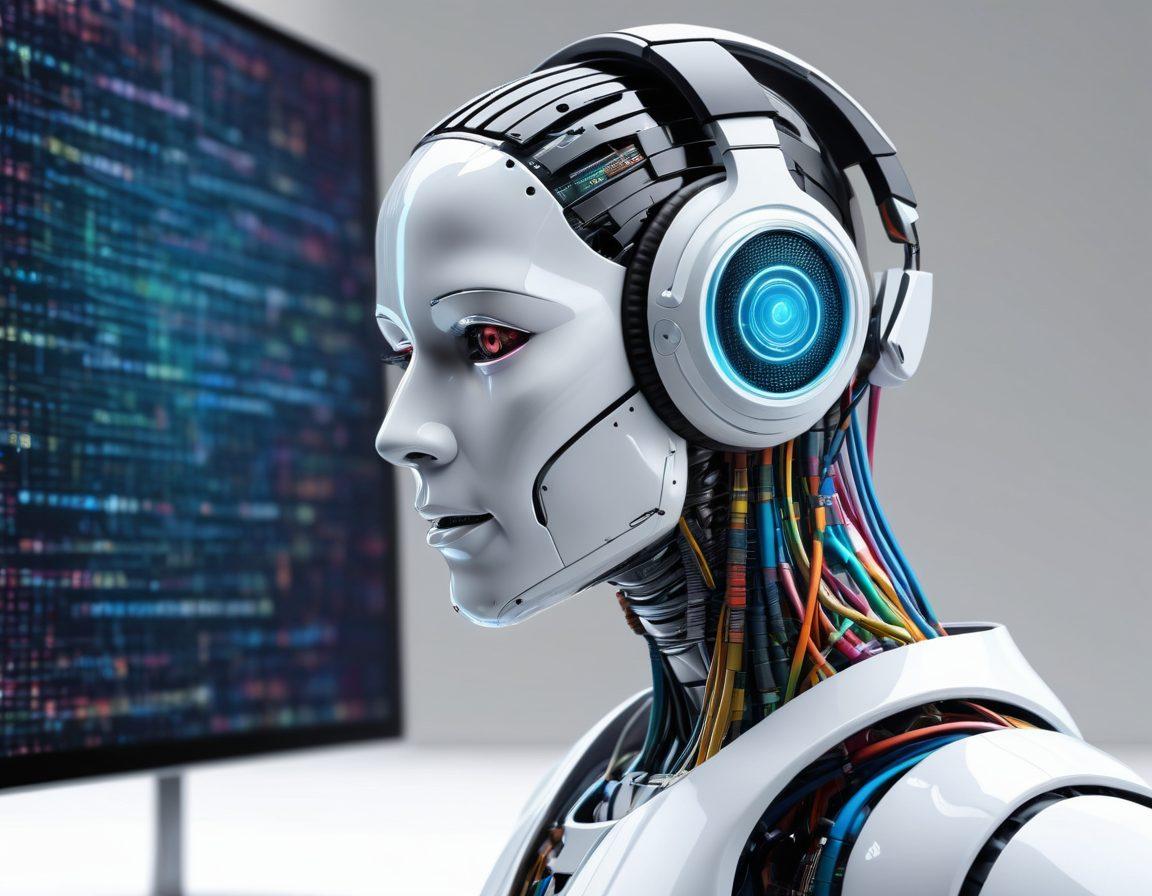Revolutionizing the Web with AI: The Future of Voice Modeling and Online Voice Tools
Imagine browsing your favorite website, and instead of reading through walls of text, you’re greeted by a silky, human-like voice guiding you through the content. This isn’t some far-off technological fantasy; it’s the reality that voice AI is sculpting for us today. The field of voice modeling is a beacon of this transformation, with web voice applications reshaping our digital interactions. But how precisely is AI revolutionizing our web experiences through voice modeling and synthetic speech? Let’s dive in.
AI’s role in voice modeling is akin to an artist brushing life onto a blank canvas. Vocal modeling no longer relies solely on human voice actors—voice technology has advanced to the point where AI-driven voice engines can generate voices that are nearly indistinguishable from real human speech. This magic happens through sophisticated voice software and machine learning algorithms that analyze and replicate the nuances of human vocal patterns. The result? A virtual voice that can engage, inform, and entertain users with unparalleled authenticity.
The implications of this technology are vast. Take, for instance, web voice applications in customer service. By leveraging voice services powered by AI, companies can create automated voice agents capable of handling inquiries just as a human would. These digital voices, facilitated by text to speech technology, provide a seamless customer experience that feels both personal and efficient. But it’s not just about efficiency—voice interaction powered by conversational AI brings a human touch back into digital communications, fostering a sense of personal connection that text alone often fails to deliver.
Moreover, the advent of realistic voice synthesis is transforming accessibility across the web. Think about how online voice tools can facilitate learning for people with visual impairments through spoken language processing. Or consider voice recognition systems that can cater to diverse accents and speech patterns, democratizing access to information. The voice-enabled web isn’t just a convenience; it’s a bridge toward inclusivity. Through speech technology, the internet becomes a more navigable and interactive space for everyone, regardless of their abilities.
As we stand at the precipice of this AI-driven revolution, the landscape of voice generation and AI voice integration into web-based voice solutions continues to evolve at an exhilarating pace. With ongoing advancements in natural language processing and voice frameworks, the future holds limitless possibilities—voice-driven applications that understand context, voice AI that can simulate emotions, and virtual voices that can hold meaningful conversations. We’re not just witnessing the evolution of speech synthesis; we’re experiencing the dawn of a new era in digital interaction. How will you harness the power of AI voice to transform your web experiences?
From Text to Speech: The Future of AI-Powered Voice Solutions Online
Imagine a world where every digital interaction can talk back to you in a seamless, natural manner—these are no longer scenes from a futuristic movie, thanks to advancements in voice modeling and AI-powered voice solutions. The shift from text to speech marks an exciting era in digital communications. So, what does the future hold for AI-driven voice technology? Let's delve deep into how voice generation is not just transforming the web but revolutionizing our everyday interactions.
The leap from basic text to speech applications to sophisticated AI voice solutions has been nothing short of monumental. Early voice software often sounded robotic and unnatural, but with current AI voice technology, the sound is increasingly lifelike. Voice AI and synthetic voice technologies have reached a level where they can replicate human intonations, emotions, and even accents. This realism in voice generation offers immense potential for enhancing web voice applications, from virtual assistants to automated customer service portals.
Consider the recent advancements in conversational AI and spoken language processing. These innovations are pushing the boundaries of voice integration in everyday applications. Remember the 'virtual assistants' that could barely grasp complex commands? Now, conversational AI can not only understand but also respond in a contextually accurate manner, making interactions more intuitive and human-like. This leap in voice recognition and voice interaction capabilities is indispensable for industries ranging from e-commerce to healthcare.
One can’t ignore the tremendous impact of natural language processing (NLP) in the realm of voice-enabled web solutions. NLP, combined with robust voice frameworks and voice engines, allows for smoother, more adaptive communication systems. The result is a plethora of web-based voice solutions that can serve multiple functions: from aiding individuals with disabilities through real-time speech synthesis to enhancing learning experiences with interactive, vocal tutorials.
However, the most exciting aspect is how realistic voice synthesis is shaping the future of voice services online. Imagine web voice applications where customer service chatbots don’t just chat; they converse in reassuring, human-like tones. Or educational platforms where digital voices guide learners through complex topics, making the experience more engaging and less monotonous. As voice modeling technology continues to evolve, we’re moving towards a future where the digital and human worlds seamlessly converge, creating richer, more immersive opportunities for interaction.
Unleashing AI Voice: Innovative Web Applications and Tools Revolutionizing Communication
Imagine a world where technology harmoniously blends with our natural mode of communication—our voice. As we stride into the future, innovative web applications and tools powered by voice AI are not only becoming ubiquitous but also enriching our daily communication. In this fascinating realm of voice modeling, we have witnessed the advent of voice technology that can mirror human speech with uncanny accuracy. This is not just a leap but a veritable revolution in how we interact with the digital world.
At the heart of this revolution lies a myriad of voice services that are making waves across various sectors. From AI-driven voice assistants like Siri and Alexa to cutting-edge text-to-speech software, the arsenal of web voice tools is expanding. These voice frameworks are akin to modern-day wizards, conjuring up synthetic voices that are indistinguishable from real human speech. With advancements in voice engines and speech synthesis, the dream of having seamless, natural conversations with machines is no longer sci-fi fantasy but a tangible reality we are living in.
Consider for a moment the impact of these voices on our daily lives. Have you ever wondered how much of your day is guided by automated voice systems? From the friendly disembodied voice that helps you navigate the labyrinth of customer service to the never-tiring tutor that aids language learning students through voice-enabled web applications, conversational AI is omnipresent. Voice generation technology is not only enhancing convenience but also empowering individuals, especially those with disabilities, by providing them with powerful communication tools.
The appeal of voice AI lies in its user-centric design. For businesses, integrating natural language processing with voice interaction can revolutionize customer service through virtual voice assistants. These AI-driven voices can handle a myriad of queries, providing real-time solutions and thereby increasing efficiency and customer satisfaction. Moreover, voice-enabled web interfaces allow users to perform complex tasks through simple voice commands, breaking barriers of digital literacy and accessibility. Indeed, the interplay of voice simulation and online voice tools offers a treasure trove of possibilities for web-based voice solutions.
As we look ahead, the fusion of AI and voice technology promises to transform myriad sectors—from creating more personalized educational experiences through sophisticated speech technology to enhancing healthcare with realistic voice synthesis for patient engagement. We stand on the cusp of a new era where voice recognition and vocal modeling will be integral to daily interactions. The journey of voice AI has only just begun, and the future holds incredible potential for further innovations. So, let’s embrace this vocal renaissance and imagine a world where our natural communication, facilitated by AI-driven voice, continues to push the boundaries of what’s possible.


